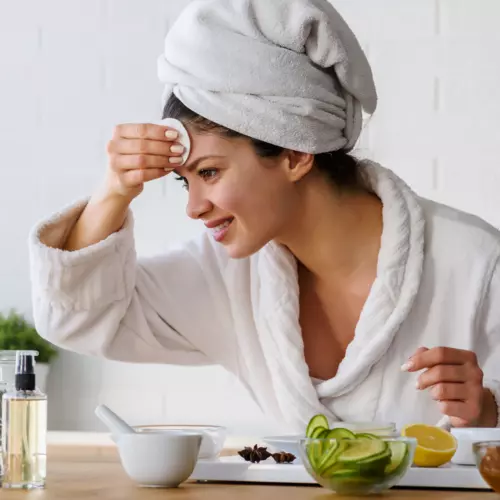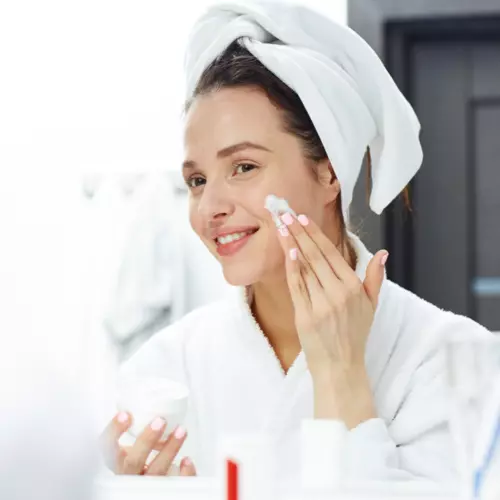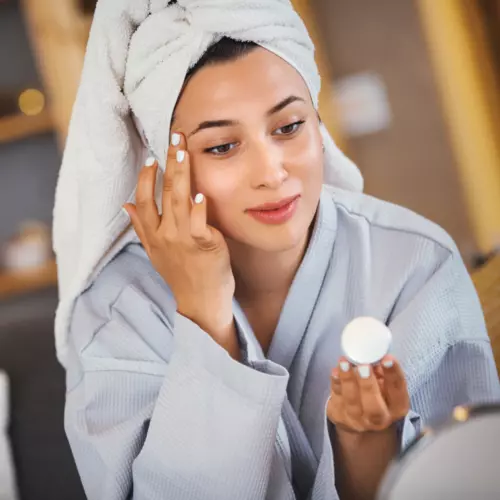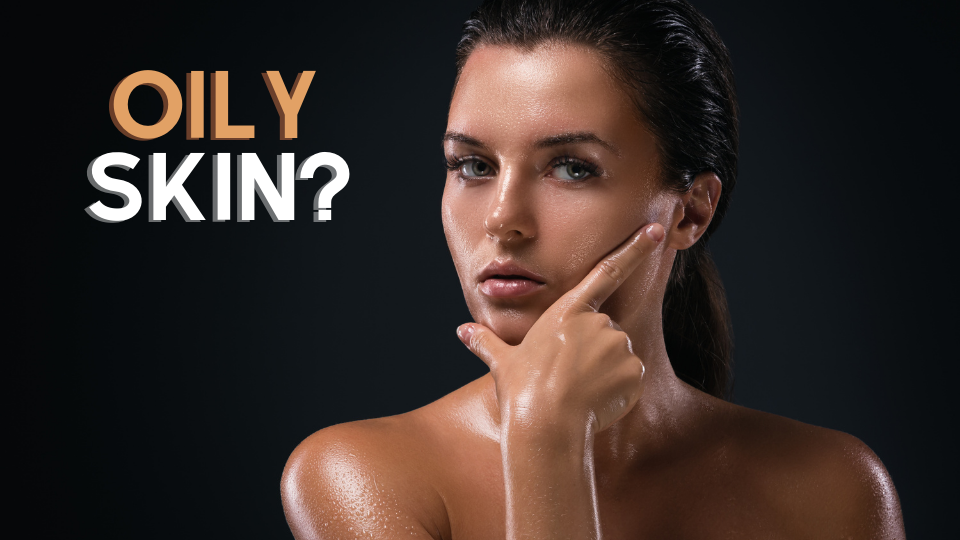Skin care routines are highly talked about and are getting more and more complicated. Everyone seems to be an expert. However, with busy schedules and for people just introduced to the idea of skin care, this can get a little overwhelming.
Dr. Aakriti Mehra helps us simplify the night time routine, telling you the most basic and necessary steps to help you achieve your skin goals.
These include cleansing, toning, actives and moisturization.
Step 1: Cleansing
The purpose of cleansing is to remove all the dirt, sebum, impurities, dead skin cells and skin products that you have applied.
I personally prefer the double cleanse method which involves using an oil-based cleanser followed by a water-based cleanser.
Oil based cleansers are the gentlest way to remove make-up. They work by breaking the bonds between make-up molecules without harming the skin. They work very well on dry and sensitive skin but can be used for oily skin as well. The method of application is by massaging the product into the skin which gives your routine a luxurious feel to start with.
The two most popular forms of these types of cleansers are cleansing balms and micellar water. Technically, micellar water, as the name suggests, is water based. However, the mechanism of action is that of an oil-based cleanser. While micellar water should be the preferred method of removal for heavy eye make-up, balms are wonderful for removing grime from the rest of the face. They can, however, be used interchangeably.
Water based cleansers are all the regular face washes that you get in the market. Choose the one best suited to your skin type. Individuals with oily skin should prefer cleansers with salicylic acid or glycolic acid. People with dry skin should choose gentler, more hydrating face washes, which could include ingredients like mineral oils of lanolin.
Step 2: Toning
Traditionally, toning was all about basically two functions. Before double cleansing was really a thing, it was the step that was meant to help clear the grime after your face wash. It was also important to help tighten the skin and its. Now, with the different kinds of toners now available, they perform additional functions that make them even more important in your routine.
Some of these include:
- Exfoliation
- Hydration
- Priming
- Mattifying
There are various ingredients that help with all of these. Apart from this, toning also prepares the skin to accept the action of serums better. That brings us to the next step of using actives.
Step 3: Serums
A serum is a potent, concentrated formulation of any active ingredient that can target specific skin concerns. This is a broad topic if we try to cover everything because there are innumerable kinds of serums.
The basic thing you need to be clear about is that if there is one skin goal that you are looking to achieve, it is your serum which will get you there.
The three most common indications targeted by serums are:
- Dryness: The primary ingredient in serums targeting dryness is hyaluronic acid. While hydrating the skin it also provides an additional benefit of anti-aging as well as prepares the skin to accept the moisturizing ingredients present in your night cream.
- Pigmentation: Uneven skin tone is best tackled by serums that contain glycolic acid, licorice, niacinamide, vitamin C, azelaic acid etc. Of these, serums containing Vitamin C should also be incorporated in your morning skin care routine.
- Aging: Retinol is the go-to ingredient to prevent and reverse certain signs of aging. Depending upon your age and skin type, retinol is prescribed in different concentrations. Ideally speak to your dermatologist before picking the retinol best suited for you. You don’t want to wrong here.
A naturally occurring compound, Bakuchiol has also recently created a lot of buzz by providing similar benefits as retinol without the fear of complications associated with the improper use of it. In fact, we can feel proud that bakuchiol was first extracted by an Indian scientist and is hence named after the Indian nomenclature of the plant, Bakuchi.
These powerful ingredients are preferably avoided during morning routines (except Vitamin C) as they can sensitize the skin to the sun.








